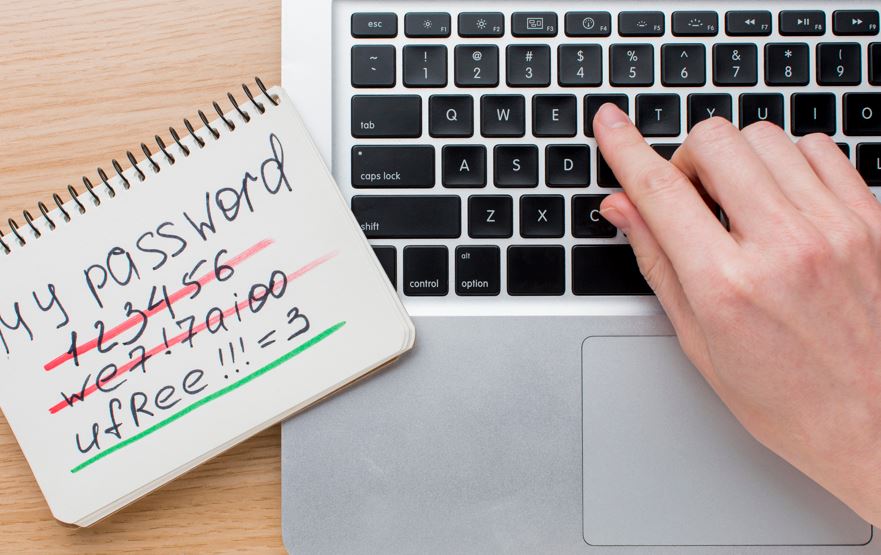Maximize Security with LastPass The Best Password Manager
9th November 2024
Peter Samos
In an era where online security holds paramount importance, it is imperative to identify the most effective method of safeguarding personal information.
LastPass stands out as an exemplary password management solution meticulously crafted to shield your data from modern cyber threats.
This article intends to elucidate the essence of LastPass, underscore the necessity of utilizing a password manager, outline the vulnerabilities associated with weak passwords, delineate the salient features of LastPass, provide guidance on its setup process, and elucidate strategies for optimizing security through this robust utility.
Kindly remain engaged to ascertain how LastPass can be instrumental in enhancing security within the digital realm.
What Is LastPass?
LastPass is a widely utilized password manager that serves to bolster online security through the secure storage and management of passwords within a digital vault. This functionality ensures that users can access their accounts utilizing strong, encrypted passwords.
Through the implementation of robust encryption methods, LastPass presents a convenient solution for both individuals and businesses in generating and safeguarding intricate passwords for a myriad of online accounts. This approach eliminates the necessity of memorizing numerous passwords, thereby diminishing the likelihood of employing weak or duplicated passwords across various platforms.
Moreover, LastPass incorporates features including password autofill and password sharing, which serve to streamline the login process and foster collaboration among users. The tool underscores the significance of adhering to robust password protocols, thereby advocating for improved cybersecurity practices and safeguarding sensitive data from unauthorized access.
Why Use a Password Manager?
Utilizing a password manager is imperative for upholding robust password security protocols through the creation, storage, and management of secure passwords. This practice is essential for fortifying cybersecurity measures and safeguarding data integrity.
What Are the Risks of Using Weak Passwords?
The utilization of weak passwords exposes users to significant cybersecurity risks, such as data breaches and unauthorized access to sensitive information, consequently jeopardizing overall data protection.
For example, prevalent cyber attacks like brute force attacks specifically target weak passwords by methodically attempting combinations until the correct one is determined. Cybercriminals might exploit weak passwords to infiltrate systems, pilfer personal information, or perpetrate financial fraud.
Incorporating robust password security protocols, such as employing intricate combinations of letters, numbers, and special characters, coupled with the implementation of multi-factor authentication, can notably diminish the probability of successful breaches. These procedures establish multiple layers of defense, rendering it challenging for hackers to decipher passwords and access sensitive data.
What Are the Features of LastPass?
LastPass provides a range of features strategically developed to optimize security, encompassing a secure password vault, robust password generator, and multi-factor authentication. These features are all oriented towards advancing password management and fortification.
1. Secure Password Generator
The secure password generator feature integrated within LastPass is designed to generate robust passwords that are inherently difficult to decipher, thereby fortifying the security of users' accounts against unauthorized access.
Utilizing a password generator, such as the one embedded in LastPass, presents a significant opportunity for individuals to bolster their online security posture. The creation of strong, intricate passwords is paramount in protecting sensitive data and preempting potential cyber threats. The passwords generated through these tools exhibit a high degree of complexity and uniqueness, consequently diminishing the likelihood of unauthorized entities compromising personal information.
The automated generation of these sophisticated passwords not only streamlines the process but also elevates the overall security posture of diverse online accounts. This methodical approach not only enhances the integrity of passwords but also provides users with a robust defense mechanism against potential security breaches.
2. Auto-fill and Auto-login
The auto-fill and auto-login functionalities of LastPass streamline the process of secure login by automatically inputting stored login credentials, ensuring swift and secure access to online accounts.
Users benefit from the convenience of eliminating the need to manually enter usernames and passwords each time they log in to a website. This not only saves time but also minimizes the likelihood of errors in inputting login information. These features bolster security measures by shielding users from keyloggers and various cyber threats that might intercept sensitive login details. By utilizing auto-fill and auto-login capabilities, users can traverse the online landscape confidently, assured that their accounts are safeguarded without compromising ease of access.
3. Multi-factor Authentication
Multi-factor authentication (MFA) in LastPass enhances security measures by introducing an additional verification step, such as a code sent to a mobile device, alongside the password. This supplementary step plays a critical role in bolstering the security of user accounts, ensuring that unauthorized individuals are unable to gain access even if a password is compromised.
MFA encompasses a range of methods, including biometric authentication, security questions, hardware tokens, or push notifications to registered devices. By integrating at least two of these authentication factors, MFA effectively mitigates the risks associated with identity theft and unauthorized access to sensitive information.
Adopting a proactive stance, MFA is instrumental in safeguarding personal and confidential data within the context of an increasingly digital landscape characterized by prevalent cyber threats.
4. Secure Notes and Digital Wallet
LastPass offers a range of features designed to enhance data security for users, including Secure Notes and Digital Wallet. These features enable individuals to securely store sensitive information, such as credit card details and personal notes, in an encrypted format to prevent unauthorized access.
Secure Notes allow users to store vital data like login credentials, secure passwords, and confidential documents within LastPass's secure environment. Utilizing advanced encryption techniques, LastPass ensures that all stored information is protected against unauthorized breaches.
Moreover, the Digital Wallet feature adds an extra layer of security by enabling users to store financial information, such as bank account details and payment card data, in a secure digital space. This feature not only streamlines the management of sensitive data but also provides users with the assurance that their information is safeguarded by top-notch security protocols.
How to Set Up LastPass?
The process of configuring LastPass entails the establishment of an account, downloading the browser extension, and importing existing passwords. This collective procedure ensures a comprehensive level of account security and facilitates streamlined password management.
1. Create an Account
The initial step in utilizing the password manager LastPass involves creating an account, a process that necessitates users to supply secure login credentials and establish an initial master password.
During the configuration of the master password, it is imperative to select a robust and distinctive amalgamation of characters, numbers, and symbols to augment security. This master password functions as the principal means to access all the stored passwords and confidential information within LastPass. It is strongly advised to refrain from utilizing easily predictable passwords such as birthdates or common phrases. By fortifying your login credentials, you ensure the safeguarding of your LastPass account against unauthorized entry and potential security vulnerabilities.
2. Download the Browser Extension
The installation of the LastPass browser extension facilitates the integration of the password manager with the web browser, enabling seamless storage and management of passwords directly within the browser interface.
Upon the successful installation of the extension, users gain convenient access to their saved passwords and login credentials while browsing, eliminating the need to repeatedly recall or input them. This not only optimizes time management but also bolsters online security by promoting the utilization of unique and intricate passwords for each account.
LastPass provides a secure vault for the storage of sensitive data such as credit card information and secure notes, ensuring the encryption and protection of all stored information. By utilizing the extension, users can benefit from features such as auto-filling forms and generating robust passwords with a single click, thereby enhancing both the efficiency and security of their online activities.
3. Import Existing Passwords
The process of importing existing passwords into LastPass serves to consolidate all login credentials within a secure password vault, thus facilitating their management and bolstering overall password security.
Whether transitioning from another password manager or integrating passwords from diverse web browsers, LastPass offers a seamless import process through its extensive import capabilities. Through the centralization of all passwords within a single accessible vault, the need to navigate between multiple sources to locate appropriate login details is eliminated. This not only saves time but also mitigates the risk of forgotten or weak passwords scattered across various platforms. By designating LastPass as the primary password repository, users can benefit from the convenience of streamlined access and robust encryption for enhanced security.
How to Use LastPass to Maximize Security?
Leveraging LastPass for optimal security entails the creation of robust and distinctive passwords, activation of multi-factor authentication, and the utilization of secure notes to safeguard sensitive information, thereby ensuring a thorough data security framework.
1. Create Strong and Unique Passwords
It is imperative to establish robust and distinctive passwords to ensure the security of accounts, and LastPass's password generator serves as a tool to assist users in crafting intricate passwords that bolster password strength and enhance security.
The significance of employing strong and unique passwords cannot be overstated in safeguarding personal information and sensitive data from potential cyber threats. Through the utilization of LastPass's password generator functionality, users have the capability to effortlessly generate random combinations of characters, numbers, and symbols, thereby elevating the security of their online accounts.
The advantages associated with utilizing unique passwords for each account are rooted in the mitigation of risks associated with multiple accounts becoming compromised should one password be exposed. This practice introduces an additional layer of protection and diminishes the probability of unauthorized access to valuable online assets.
2. Enable Multi-factor Authentication
The implementation of multi-factor authentication (MFA) serves to augment password security by introducing an additional layer of protection, thereby heightening the difficulty for unauthorized individuals to gain entry to your accounts in the event of a compromised password.
Within LastPass, one prevalent method for activating MFA involves the utilization of authenticator applications such as Google Authenticator or LastPass Authenticator. These applications generate a distinct, time-sensitive code that necessitates entry in conjunction with your password during the login process. This dual authentication process ensures that unauthorized access to your account remains thwarted, even in scenarios where password exposure occurs.
By adopting this approach, the security posture of your account is substantially fortified, affording a sense of assurance that your data is shielded against potential cyber threats.
3. Use Secure Notes for Sensitive Information
Utilizing the Secure Notes feature in LastPass enables users to securely store sensitive information, such as bank account details and personal identification numbers, in an encrypted format. This ensures the secure storage and protection of passwords.
Secure Notes can also be utilized to securely store essential login credentials, credit card information, confidential notes, or any other private data that requires safeguarding. The encryption capabilities of Secure Notes provide an additional layer of security, guaranteeing that sensitive information is shielded from unauthorized access.
By leveraging Secure Notes within the LastPass platform, users can have the assurance that their valuable data is safeguarded by advanced encryption and robust security protocols, thus promoting peace of mind regarding data protection and confidentiality.
What Are the Alternatives to LastPass?
Although LastPass is widely used, there are several alternatives available that provide secure password management solutions. These alternatives include 1Password, Dashlane, and KeePass, each offering distinct features designed to improve password security.
1. 1Password
- 1Password presents itself as a robust password management solution renowned for its secure password storage, intuitive user interface, and advanced security capabilities, establishing it as a viable alternative to LastPass.
- Numerous users commend 1Password for its capacity to securely store not only passwords but also sensitive data such as credit card information, secure notes, and software licenses in a unified and easily accessible location. Additionally, 1Password features a Watchtower function that notifies users of compromised websites and potential security risks, thereby enhancing overall online security.
- When compared to LastPass, certain users gravitate towards 1Password due to its user-friendly design and seamless integration across various devices, delivering a more streamlined user experience for both individuals and organizations.
2. Dashlane
Dashlane provides an extensive password management solution that includes features like dark web monitoring, an integrated VPN, and secure password sharing, positioning it as a competitive alternative to LastPass.
The distinctive offerings of Dashlane, such as its VPN functionality and dark web monitoring capabilities, distinguish it from other password management solutions available in the market. The incorporation of a built-in VPN ensures secure online browsing experiences, while the dark web monitoring feature promptly notifies users in cases of compromised credentials.
In a comparative analysis between Dashlane and LastPass, users may find Dashlane's user-friendly interface and the additional security layer offered by its features particularly appealing. For individuals who prioritize online security and privacy, Dashlane emerges as a preferable choice due to its robust security protocols and intuitive design.
3. KeePass
KeePass is an open-source password manager known for its emphasis on security and customizable features, offering users a high degree of control over their password management configurations, thus positioning itself as a viable alternative to LastPass.
An inherent benefit of KeePass being open-source is the transparency and accessibility of its source code, enabling security experts and developers to continually scrutinize and enhance its security functionalities. This transparency fosters user trust by providing assurance that their sensitive data is being managed securely.
KeePass offers extensive customization options, allowing users to personalize the password manager to align with their specific requirements, including the creation of custom entry fields and plugins. Notably, compared to LastPass, KeePass distinguishes itself through its offline capabilities as it does not retain any data on external servers, bolstering security and ensuring user privacy.















